Cartier Introduces the Santos-Dumont Skeleton Micro-Rotor
Openworked and impressively slim.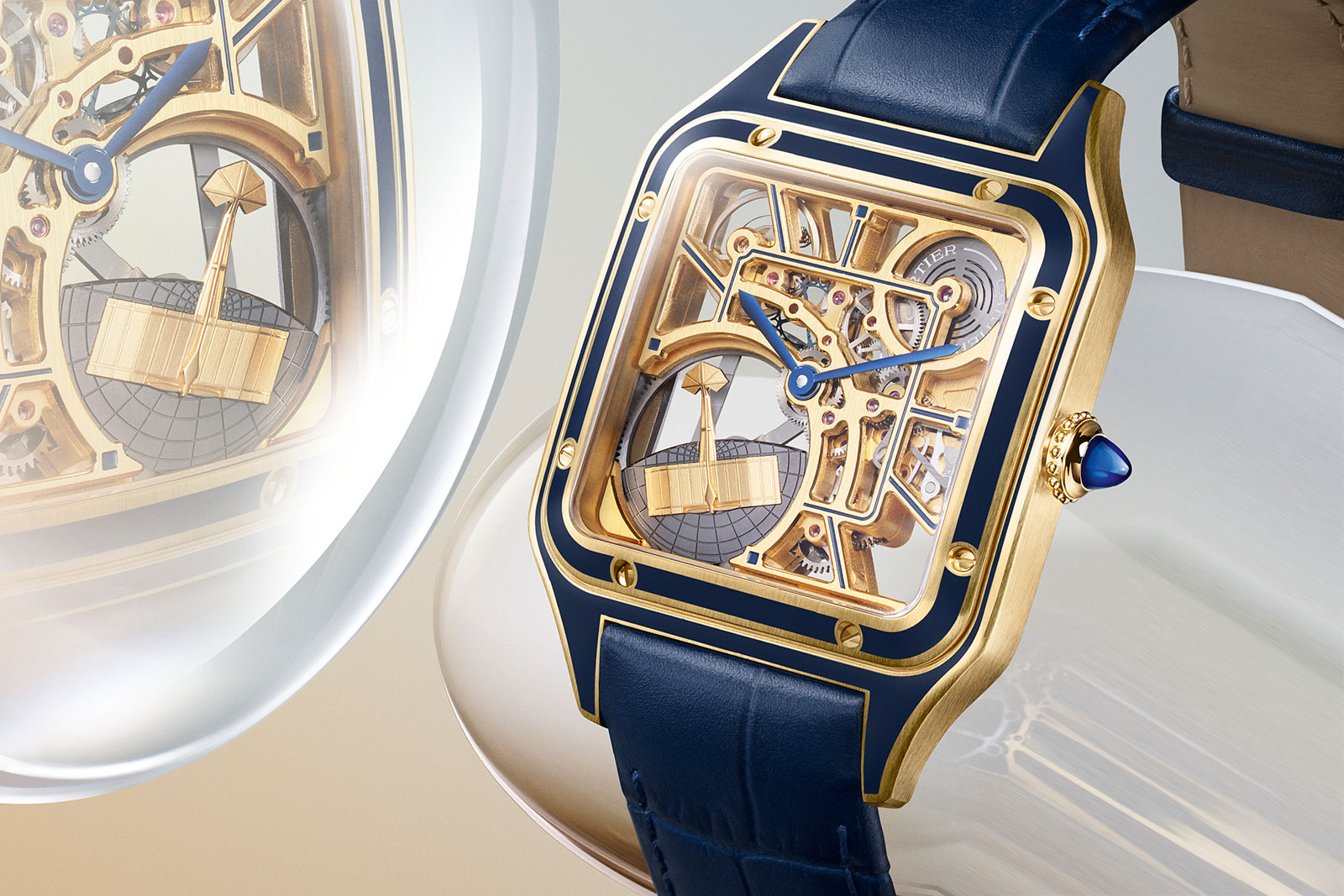
Fresh off the success of last year’s unexpected Santos-Dumont “Lacquered Case”, Cartier continues with the theme but now with an newly developed open-worked movement. Making its debut in three variants, the Santos-Dumont Skeleton Micro-Rotor underscore Cartier’s commitment to the Santos-Dumont, the model that’s truest to the 1904 watch designed for pilot Alberto Santos-Dumont.
Equipped with the cal. 9629 MC that has a plane-shaped rotor, the three references include a pair of regular production models in steel and rose gold, along with a 150-piece limited edition in a striking combination of yellow gold and blue lacquer.

Initial Thoughts
Cartier been using lacquer to decorate its jewellery, watches, and accessories almost since its founding in 1847. While a first for the brand in the modern-day – and also unique amongst watchmakers – last year’s lacquered Santos-Dumont was modelled on a similar 1920s watch, so it makes sense for the Parisian jeweller to continue with the theme.
In this context, the highlight of the Santos-Dumont Skeleton collection is undoubtedly the yellow gold model with navy-blue lacquer inlays. Not only is the lacquer applied to the case and bezel as was the case with last year’s model, but it is applied to the movement bridges.
The combination of lacquer, skeleton movement, and a whimsical plane-shaped rotor instantly sets it apart from other Cartier watches, yet it is still easily recognisable as a Cartier creation. This watch certainly scores well in terms of novelty and coherence.
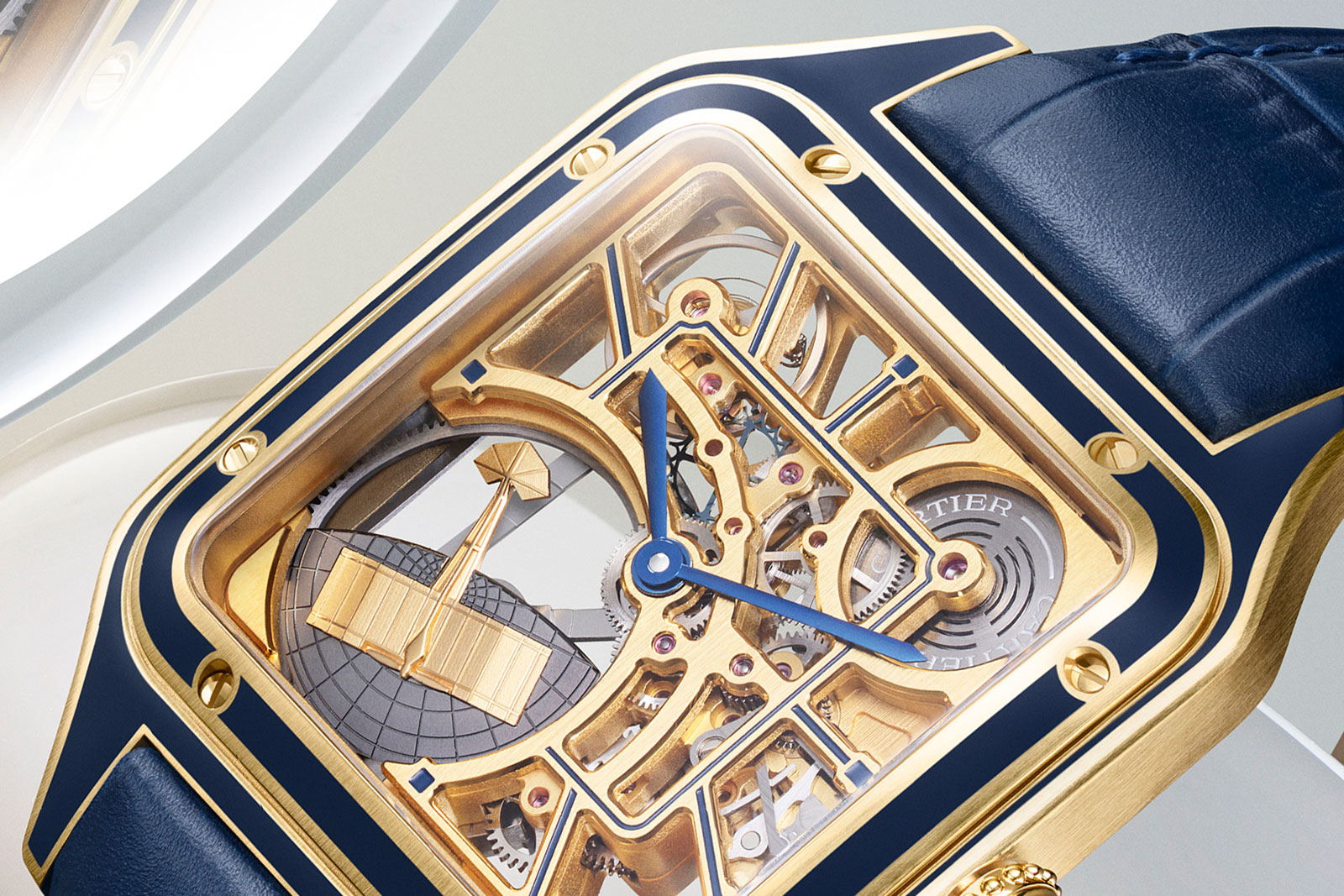
The steel and rose gold models do not get the lacquer treatment, but do benefit from lacquer decoration on the movement bridges. As a result, they are comparatively plainer but probably also more wearable on a day-to-day basis since the blue-and-gold version is striking to the point of being ostentatious.
The Santos-Dumont Skeleton starts at about US$30,000 for the steel model and rises to about US$40,000 for the yellow-gold limited edition. Comparatively speaking, the limited edition is a more compelling proposition because it is so much more interesting relative to its regular production counterparts.

The monochromatic steel model
Still iconic after 119 years
The Santos-Dumont is named for the Brazilian aviation pioneer Alberto Santos-Dumont, who asked his friend Louis Cartier to make him a watch that he could wear on his wrist while piloting his early, lighter-than-air airships around Paris. Cartier completed the watch for his famous friend in 1904, and the brand commercialised the design in 1911.
In addition to being a milestone in wristwatch design as a form watch, the introduction of the Santos-Dumont marked a significant turning point in the transition from pocket watches to wristwatches in the early 20th century. It was the first purpose-built men’s wristwatch, and because it was commissioned by an early aviator, it arguably created the pilot’s watch genre, though pilot’s watches quickly evolved into more practical forms.
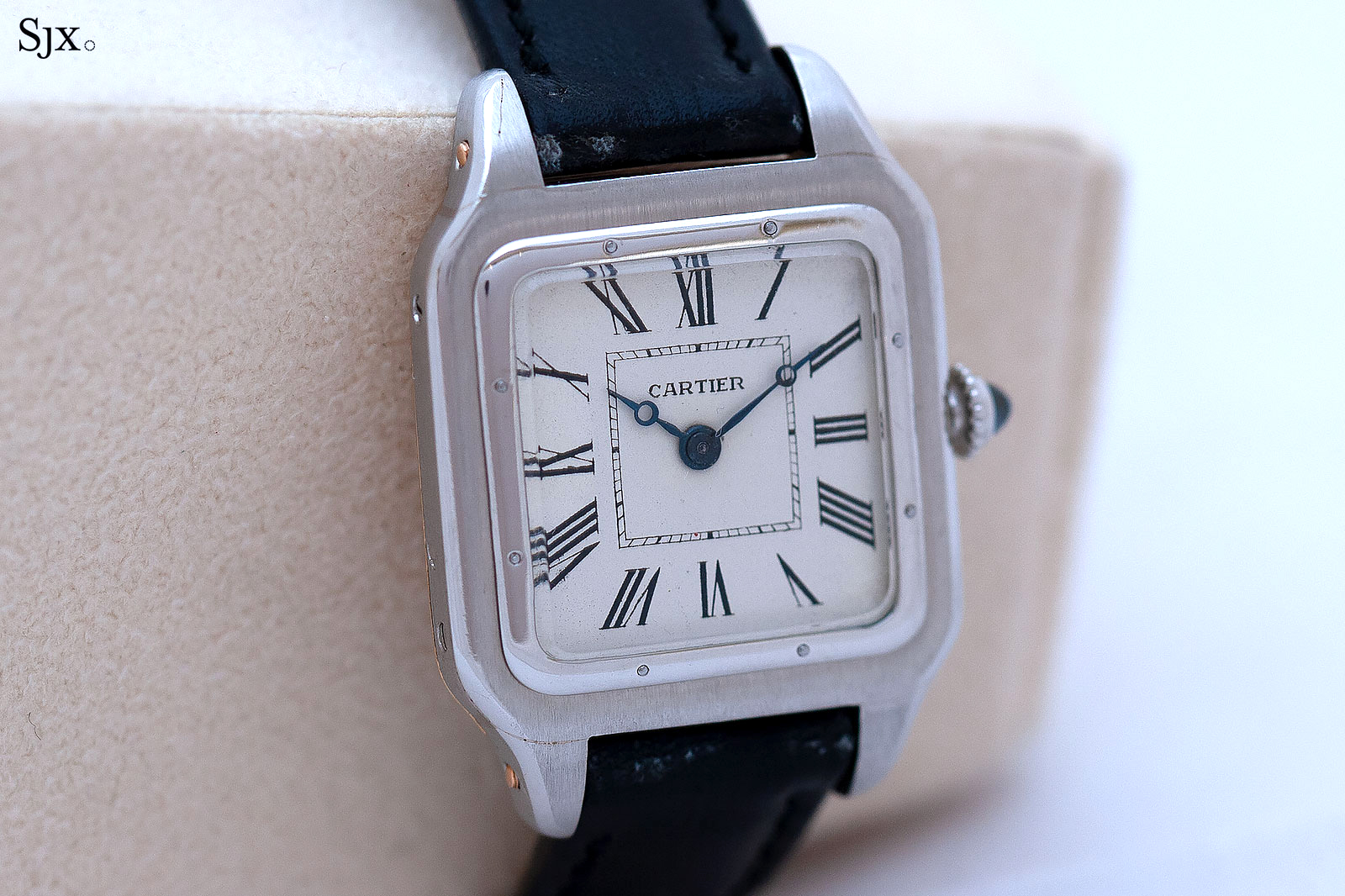
A Santos from the 1920s that’s in the Cartier Collection
Modelled on the watch designed for the aviator (as opposed to the chunkier and more modern Santos), the Santos-Dumont has been present in Cartier’s offerings more or less continuously since 1911. The jeweller has been working on reinvigorating the Santos-Dumont since 2019, when the brand debuted the first all-new Santos Dumont in over a decade. The design was refreshed by going back in history and bringing back the iconic bezel screws that were missing from the prior model. Cartier then took collectors by surprise last year with the launch of three references with lacquered cases.
The new watch pays tribute to the Demoiselle, the ultra-light aircraft Santos-Dumont developed in 1908 that became the crowning achievement of his career. This tribute takes tangible form: a miniature replica of the Demoiselle made of 18k gold is affixed to the oscillating weight at seven o’clock.
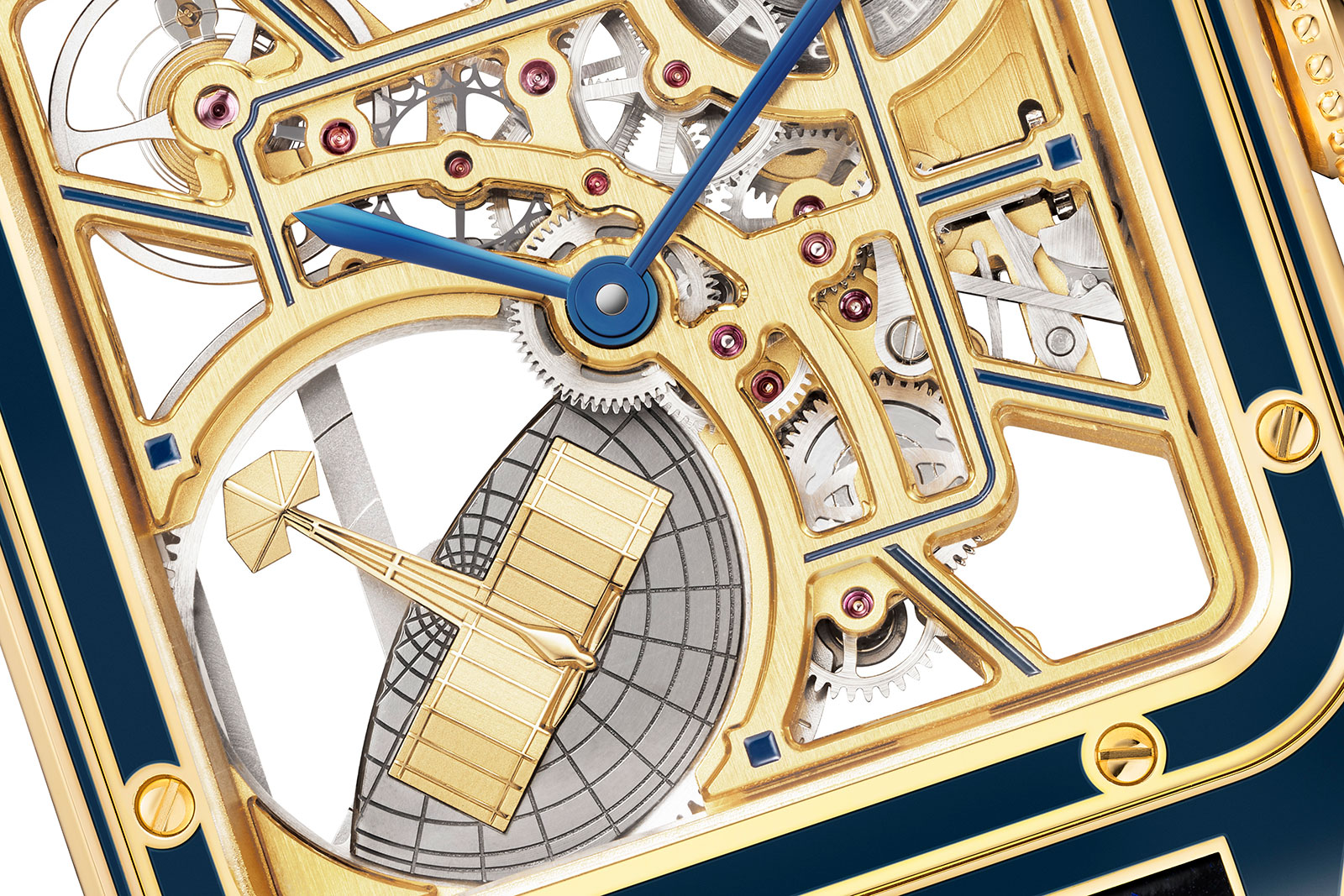
A new skeleton calibre
Having been developed over the course of about two years, the cal. 9629 MC is entirely new. The movement features an inset micro-rotor that keep the height to just 4.4mm, enabling the watch to retain the elegant proportions that collectors have come to expect from the Santos-Dumont.
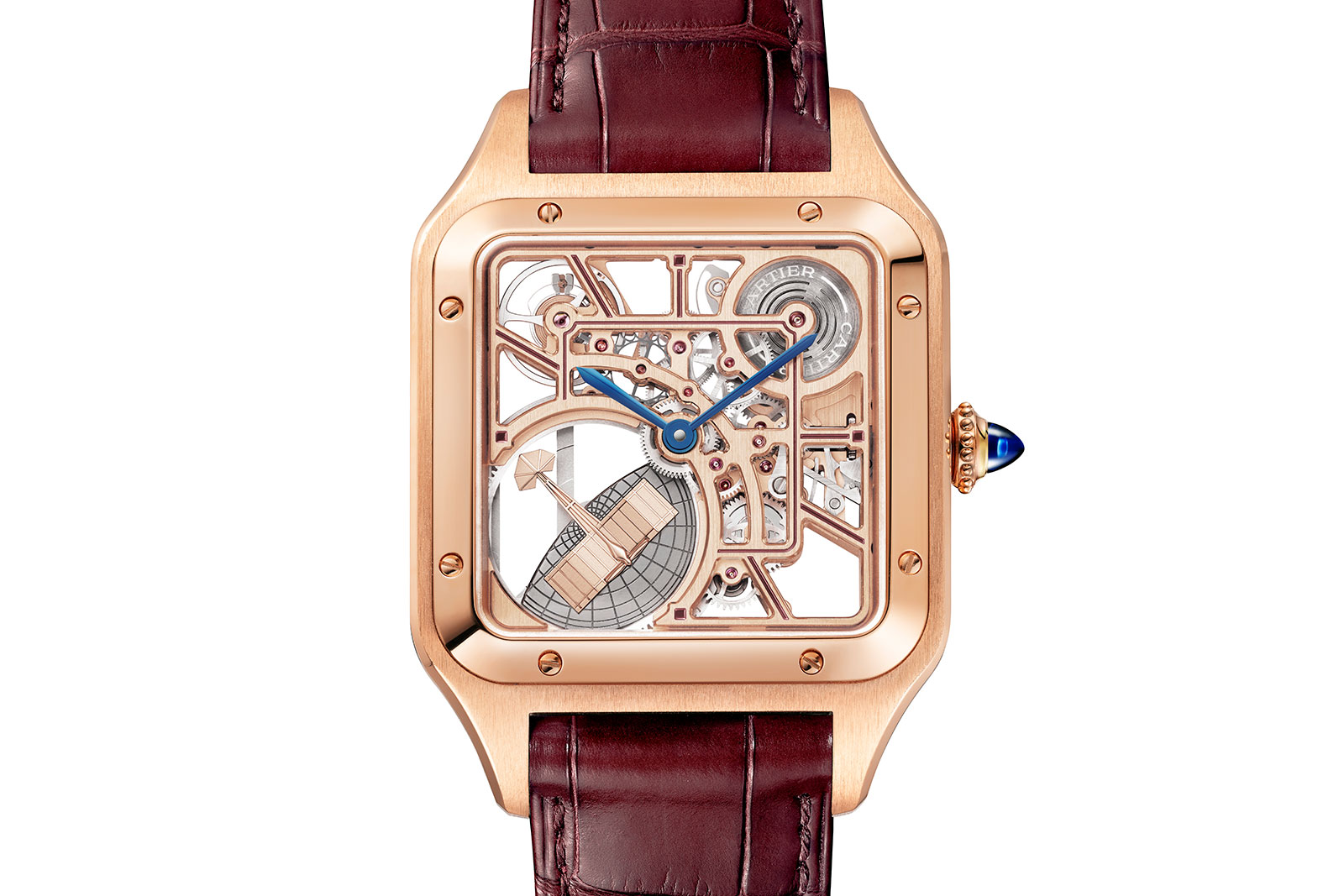
Cartier has been producing contemporary-style skeletonised calibres for more than a decade, but the new cal. 9629 MC takes things up a notch with a more coherent layout. For example, while the earlier skeletonised calibres (like the cals. 9611 MC and 9618 MC) left the lower balance wheel jewel floating awkwardly between skeletonised bridges, the cal. 9629 MC positions the mainspring barrel and balance wheel pivots symmetrically at one and 11 o’clock respectively.
While this symmetry improves the look of the movement, it does come at a cost, namely a very small barrel. This aesthetic trade-off is likely explains the lower frequency of the cal. 9629 MC as well as its 44-hour power reserve, notably shorter compared to Cartier’s other skeletonised movements.
Key facts and price
Cartier Santos-Dumont Skeleton Micro-Rotor
Ref. CRWHSA0032 (steel)
Ref. CRWHSA0030 (rose gold)
Ref. CRWHSA0031 (yellow gold)
Diameter: 31 mm
Height: 8 mm
Material: Steel; rose or yellow gold
Crystal: Sapphire
Water resistance: 30 m
Movement: 9629 MC
Features: Hours and minutes
Frequency: 25,200 beats per hour (3.5 Hz)
Winding: Automatic
Power reserve: 44 hours
Strap: Alligator leather strap with pin buckle
Limited edition: Regular production, except for yellow gold model that’s limited to 150 pieces
Availability: At Cartier boutiques and retailers
Price:
Steel: €27,900 or 44,300 Singapore dollars
Rose gold: €36,400 or 58,000 Singapore dollars
Yellow gold: €37,500 or 59,500 Singapore dollars
Prices include local taxes
For more, visit Cartier.com
Back to top.








